When it comes to beneficial insects and biological pest control, ladybugs get all the glory.
But somewhere out there in your yard, there’s a secret army of good bugs that are even more aggressive, more voracious, and not picky at all about what they eat.
Hoverflies (also known as syrphid flies or flower flies) are an often overlooked method of biological pest control, and it’s a shame because these predatory insects are a powerful defense against damaging pests in the garden (even more so than ladybugs).
But if you know how to attract them and keep them happy in your yard, you can engage a whole crew of hoverflies as a natural (and inexpensive) means of pest management, simply by keeping them well fed.
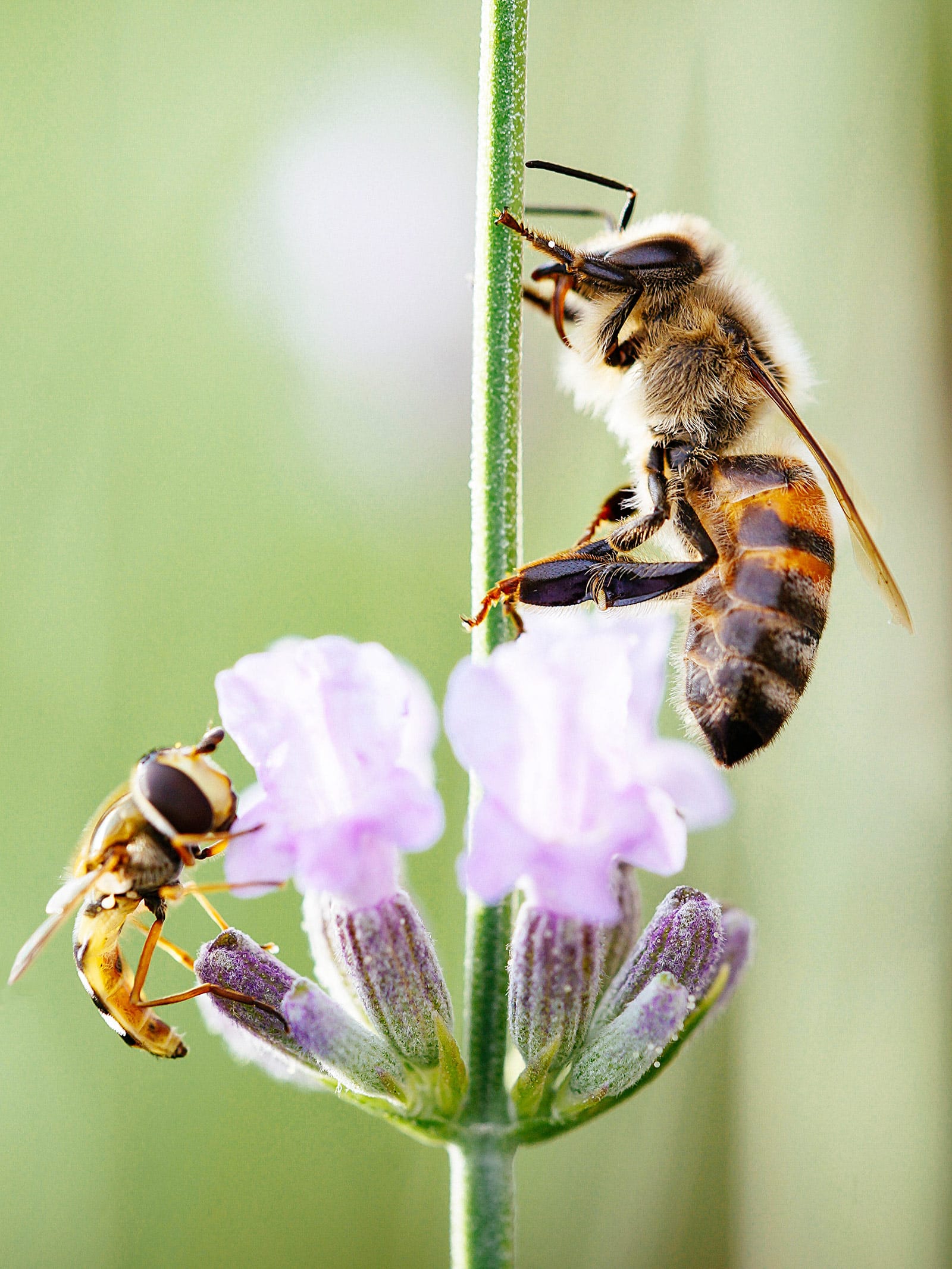
Hoverflies have short antennae, enormous bulging eyes, and only one pair of wings. They tend to be smaller than wasps (ranging in size from 1/4 to 1 1/4 inches long) and thankfully, they don’t bite or sting either since they lack stingers.
Did you know?
Hoverflies are one of the best examples of “Batesian mimicry” in nature—a phenomenon in which a harmless species evolves to resemble a harmful or bad-tasting species to protect themselves from predators. They do such an impressive job of mimicking bees and wasps that they’re often confused for sweat bees or yellowjackets.
The other giveaway that you’re looking at a hoverfly? True to its name, it hovers in the air by vibrating its wings very rapidly—a behavior that helps the hoverfly detect predators or inspect plants before it deposits eggs.
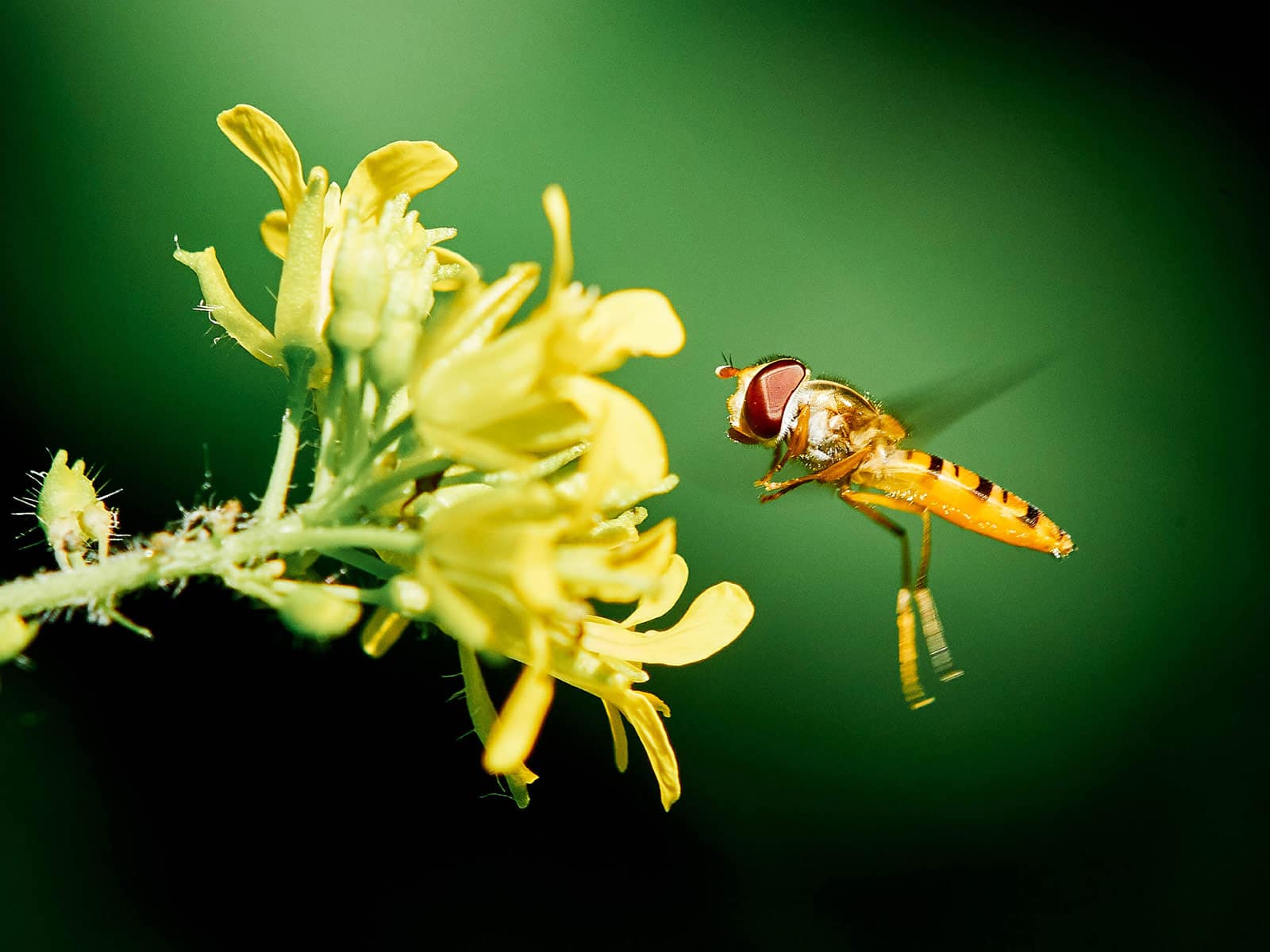
Although flies generally have a poor reputation for being pesky, there are “good flies” to be found, and the Syrphidae family (to which hoverflies belong) is one common example. It encompasses over 2,000 species and 600 genera, with hoverflies found on every continent (except Antarctica).
Syrphid flies are particularly beneficial in the garden because the larvae serve as predators and the adults serve as pollinators! While they can’t carry as much pollen on their bodies as bees, they visit more flowers and can travel greater distances.
Did you know?
Despite recent publicity campaigns to “Save the bees” (and really, they’re just talking about saving honeybees, an introduced species), most things flying around your garden do contribute heavily to pollination. This includes natives like hoverflies, lacewings, midges, and all the native bee species that get much less attention.
What do hoverflies eat?
The slug-like larvae (maggots) spend between one to three weeks snacking on a slew of aphids, as well as other slow-moving, soft-bodied pests like mealybugs, mites, scales, leafhoppers, planthoppers, thrips, young cabbageworms and other caterpillars, and the larvae and eggs of other insects. (The length of the larval stage varies by species.)
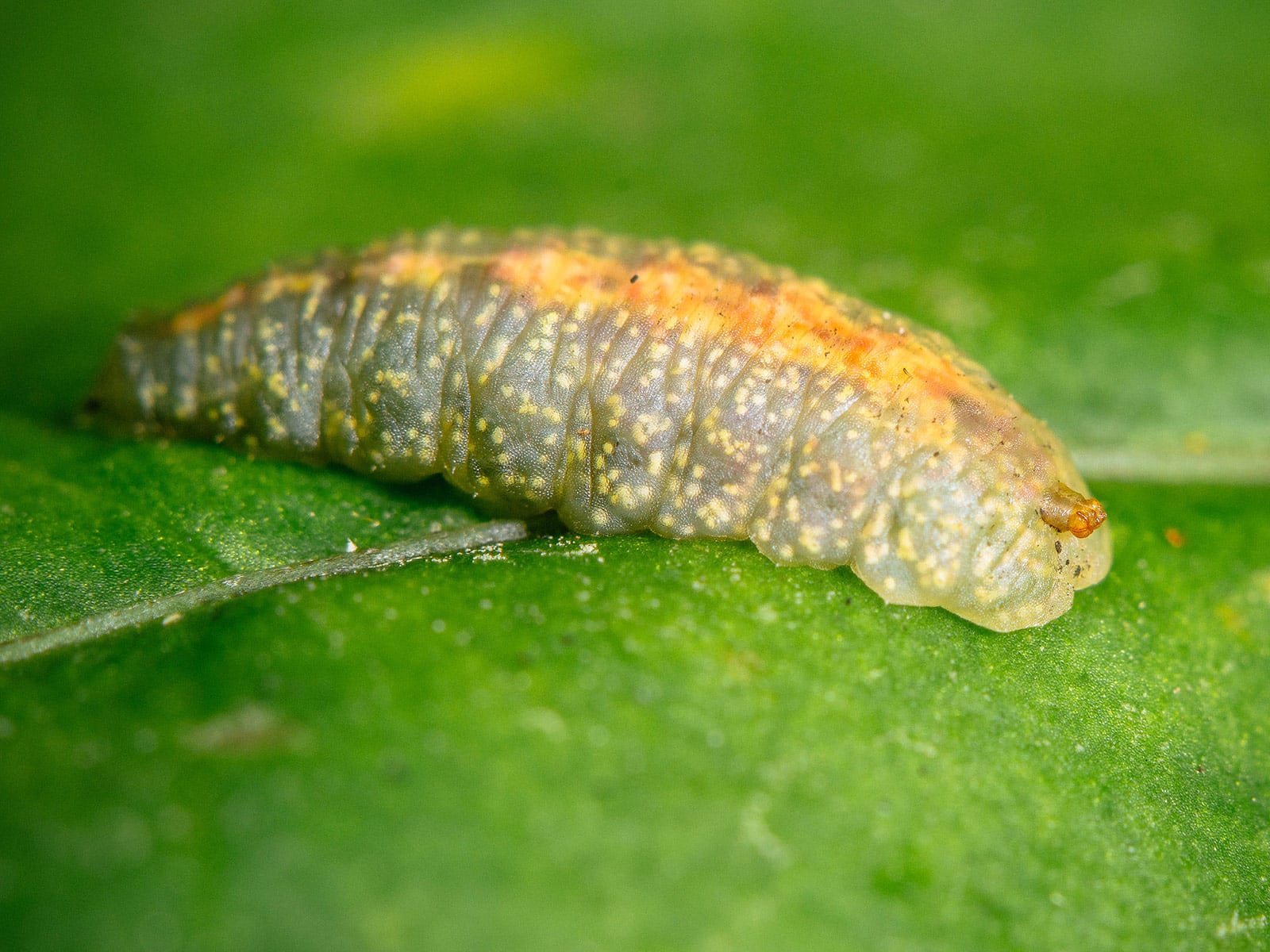

While a couple of weeks doesn’t sound like enough time to make a dent in a serious aphid infestation, consider this: a hoverfly can lay up to 400 eggs in its short lifespan!
In the larval stage, a single maggot can consume up to 400 aphids—though the larvae of some species, like Episyrphus balteatus, can consume around 1,000 aphids, and Eupeodes americanus (American hoverfly) can consume over 2,000 aphids! Then multiply that by what all its siblings are eating!
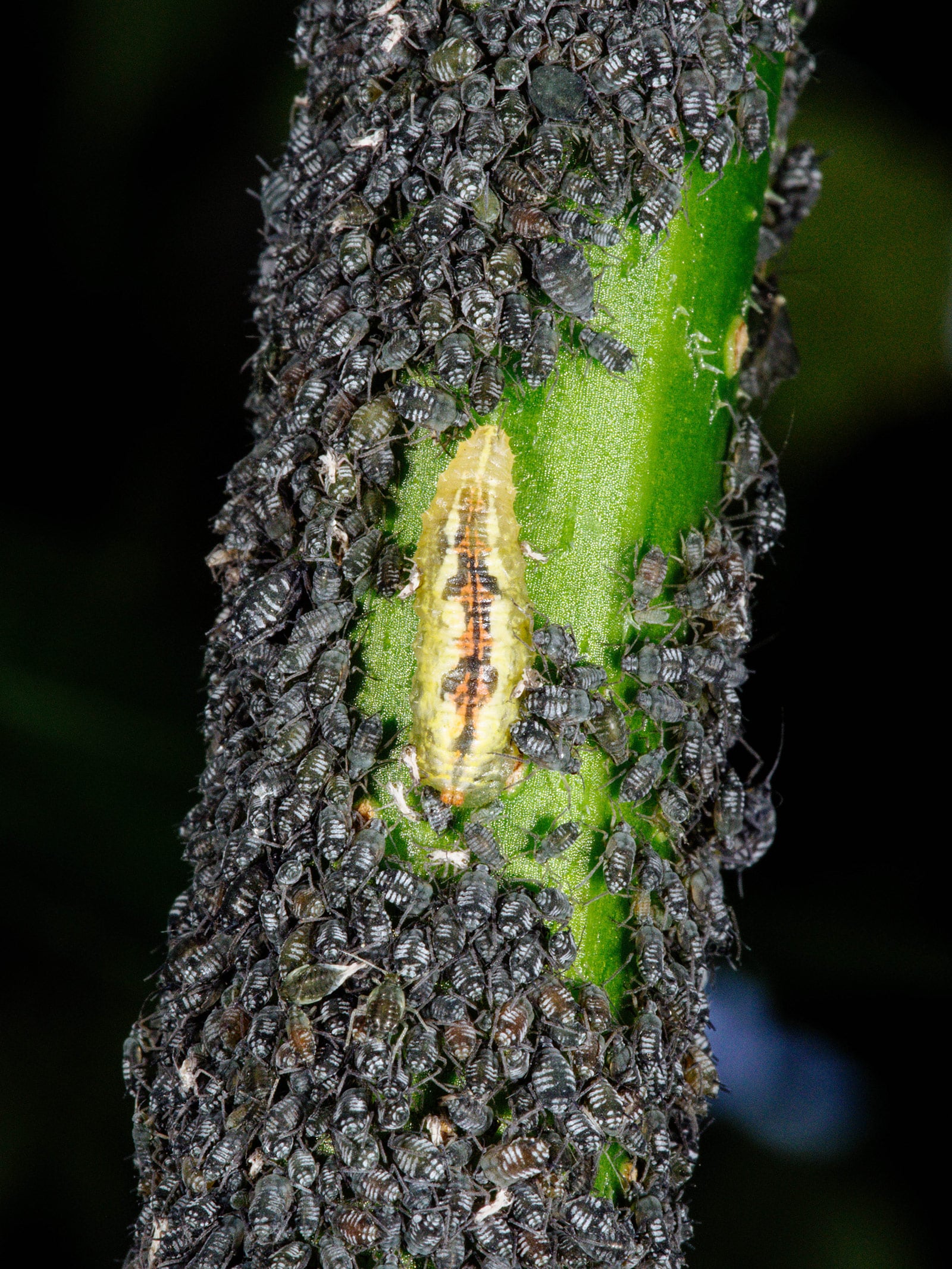
But that’s not the most interesting thing. According to this study, unlike ladybugs (so-called “active-searching predators” which elicit defensive behaviors in aphids), hoverflies cause no such response and can live within an aphid colony as a “furtive predator”—meaning aphids are less likely to spread or drop off leaves to avoid them.
Adult hoverflies are no slouch, either
While only their larvae feed on aphids and other plant-sucking pests, adult hoverflies are no less important.
They’re very strong fliers, so not only can they hover, they can fly at high rates of speed as they go from flower to flower feeding on nectar and pollen. As they do this, they carry quite a lot of pollen grains on their bodies that get dispersed far and wide.

That’s because hoverflies prefer to spread out their eggs (to reduce cannibalization) and will visit a lot of plants in search of aphid colonies. Once the hoverflies find them, they drop their eggs right in or near the colony. The eggs hatch within two to three days and the hungry maggots have an instant source of food to build up energy for their next stage (pupation).
Once the new adults emerge, they look for flowers and nectar and prepare to lay their own eggs, continuing the cycle. Depending on the species, adult hoverflies live an average of two to four weeks and produce five to seven generations per year.
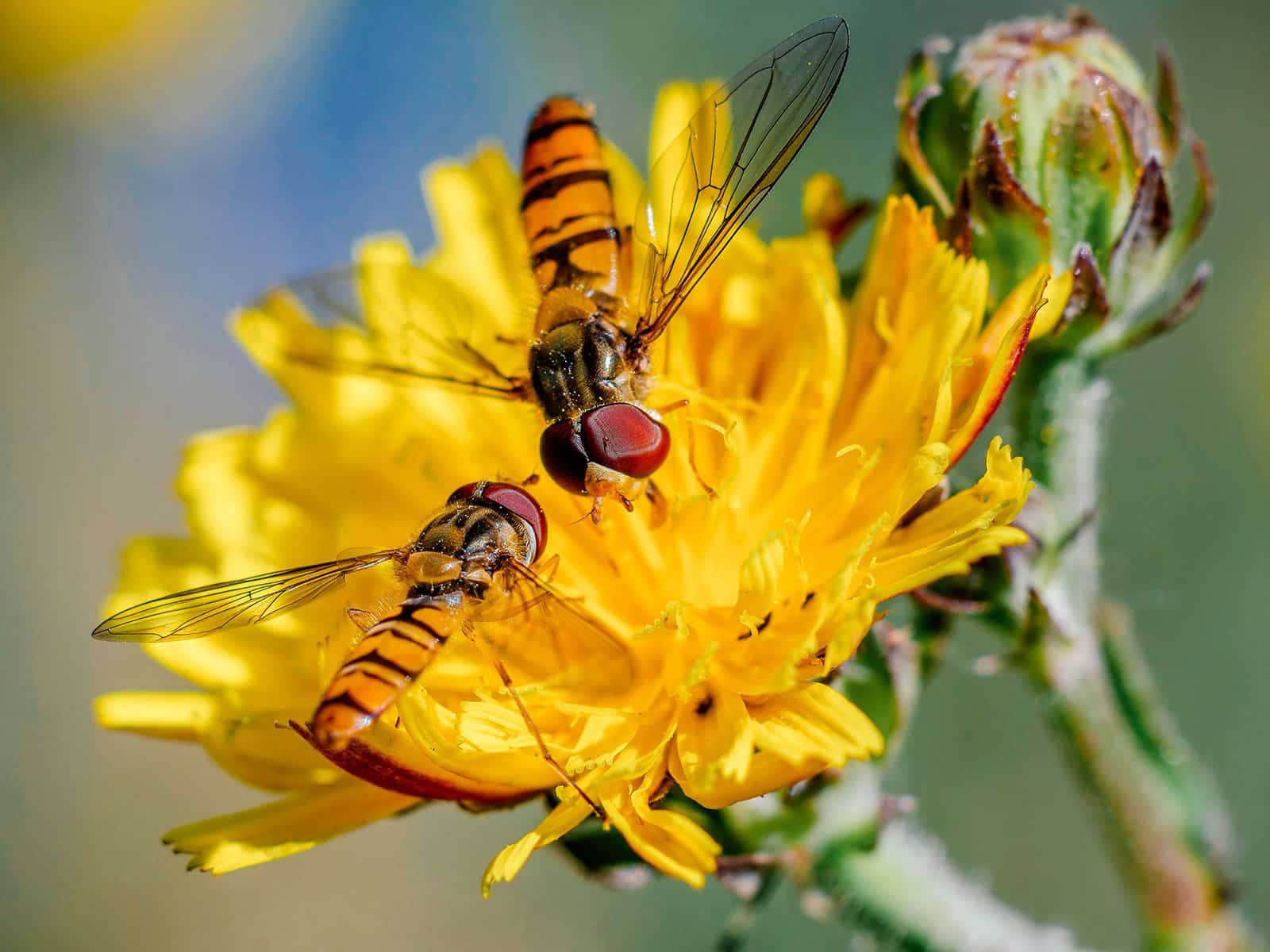
How to attract hoverflies to your garden
The first and most important tip (that applies to attracting all other beneficial insects as well) is to make sure you don’t spray your garden with pesticides, which harm the good bugs along with the bad ones.
Make sure you grow a variety of nectar-rich, high pollen-producing flowers, particularly those that bloom in spring and fall so you get early season and late season aphid control.
Hoverflies prefer simple flowers (especially white and yellow varieties and clusters of tiny blooms) that provide easy access to food. (You’ll notice in the list below that many of these flowers are also attractive to bees and other pollinators.)
Plant these in your garden
If you get these plants from a nursery, be sure the nursery can guarantee that the plants are free of neonicotinoids. Starting from seed warrants some caution as well: Neonics are predominantly used as seed coatings, and these systemic insecticides can work their way into all parts of the plants (including their pollen and nectar) as they grow.
Always make sure you buy neonic-free seeds. Most reputable seed suppliers can give you this information.
Disclosure: If you shop from my article or make a purchase through one of my links, I may receive commissions on some of the products I recommend.
Where to buy
Neonic-free flower seeds
What if you already spot aphids on your plants? Don’t be so quick to blast them off with water—this is what hoverflies are looking for, after all, and they won’t lay eggs if there aren’t any aphids around.
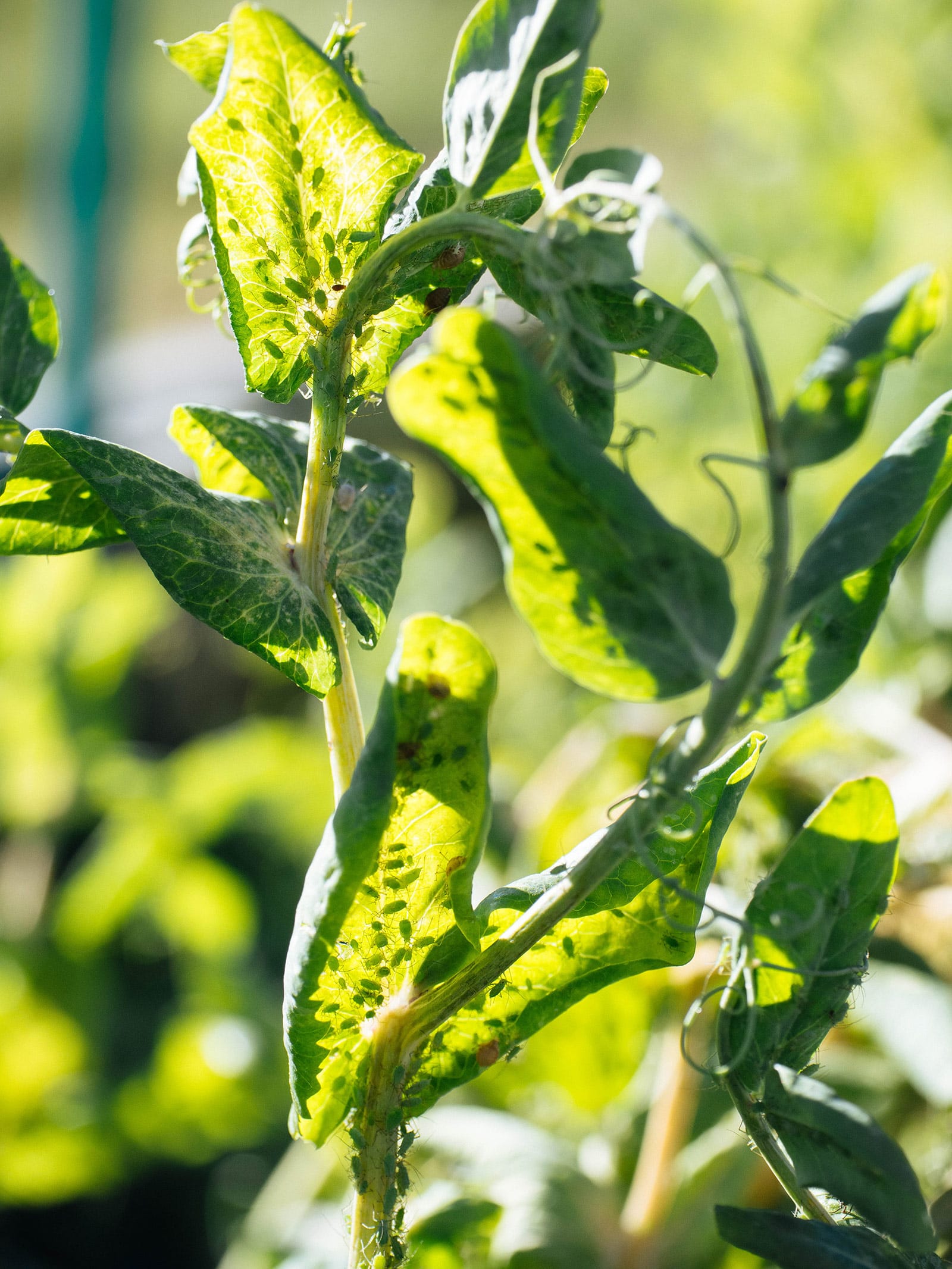
You can even plant trap crops away from your more important plants to attract the first flush of aphids (and invite the first generation of hoverflies to stay).
What are some good trap crops? Brassicas in early to mid spring, nasturtiums in mid summer, and any fresh, tender green growth in fall (when most other plants have matured).
Hoverflies are attracted to mixed garden plantings and weedy borders, so let your beds get a little wild by allowing plants to bolt and small patches of weeds to grow until they start to set seed (at which point you can remove the seed heads).

Related: These common backyard weeds are edible and delicious
Can you buy hoverflies commercially?
While ladybugs are readily available in many nurseries (and truthfully, releasing them is usually a waste of effort), hoverfly pupae are much less common.
The beneficial flies are easy enough to lure into your garden, though, that you don’t really need to spend money on that. The key is planting what they love, always have something blooming from spring through fall, and you’ll naturally attract hoverflies and other predatory insects that are worth keeping around.
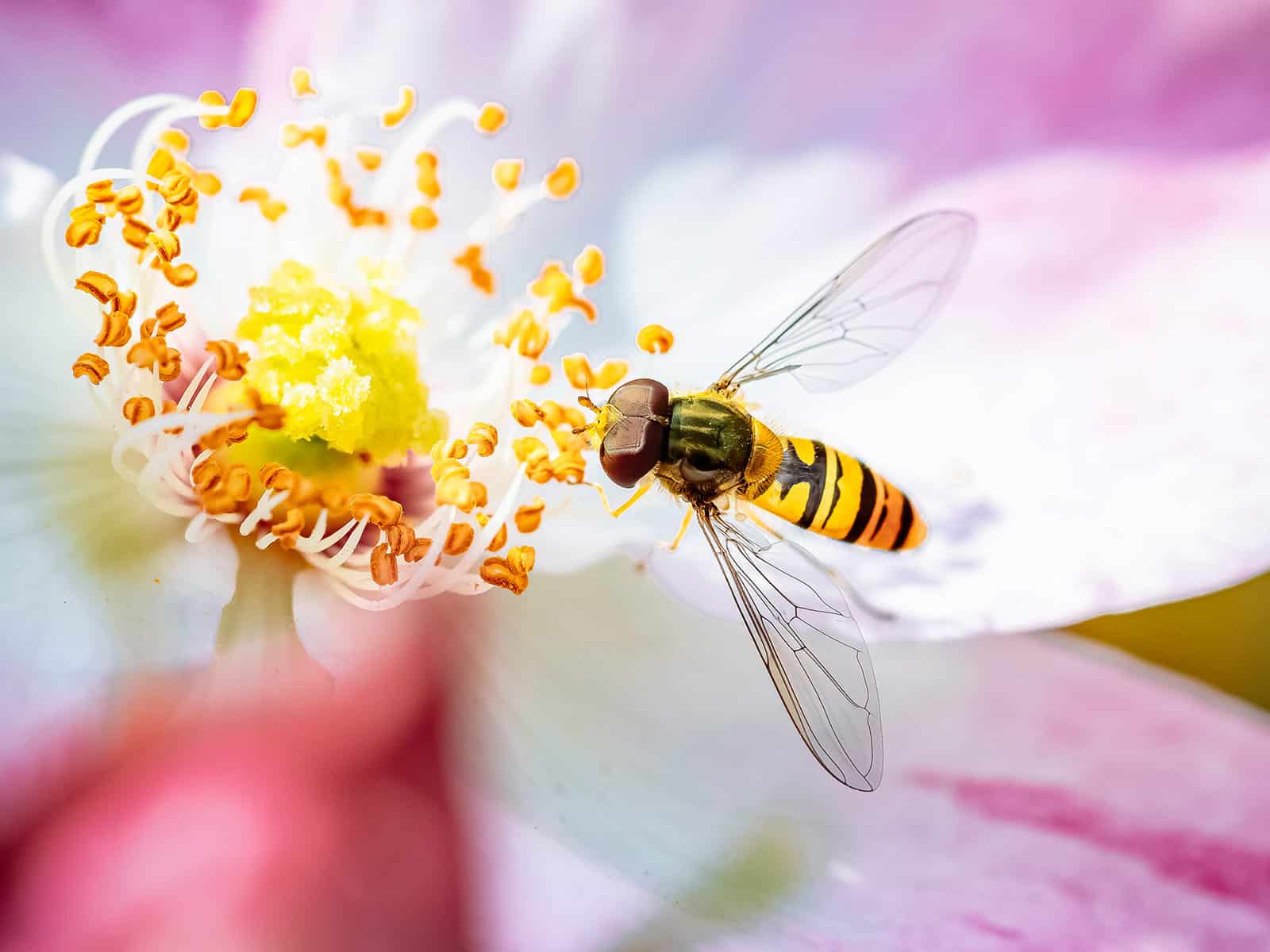
Here are more helpful posts to help you build your own biological pest control army:


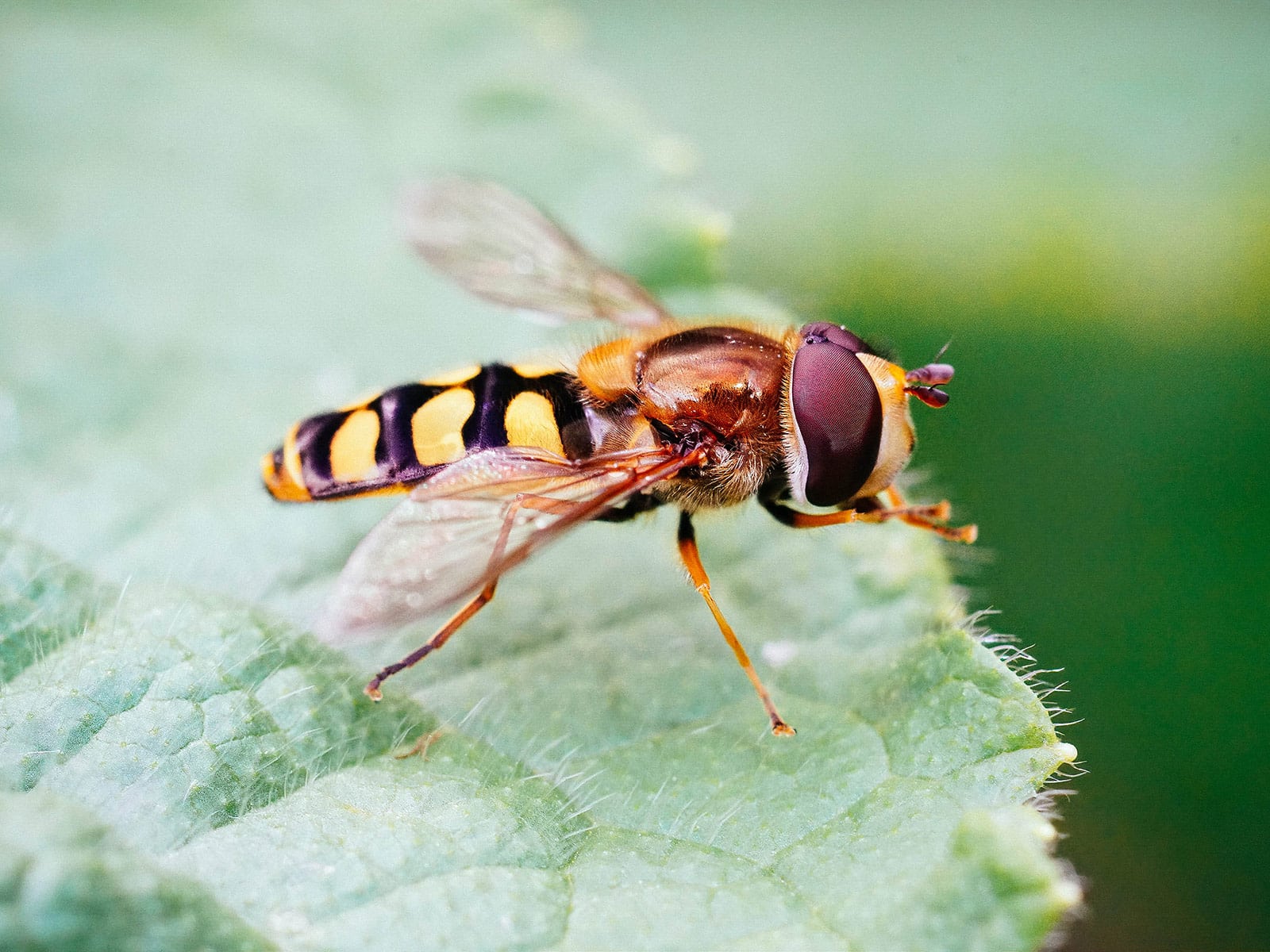
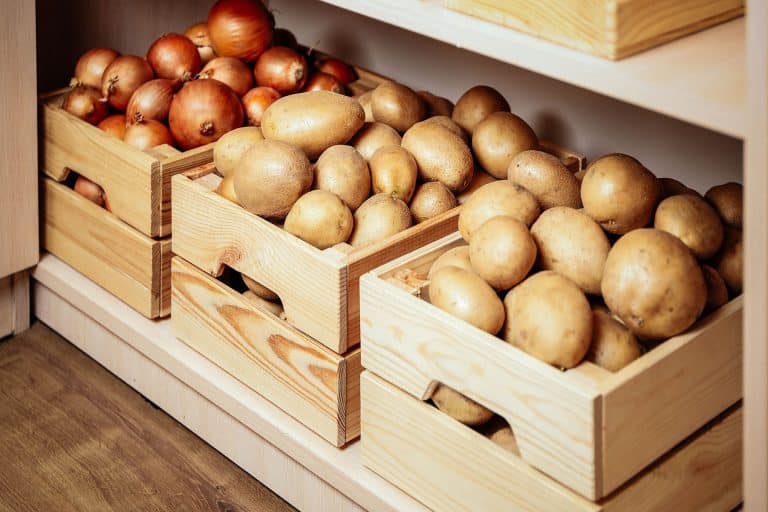

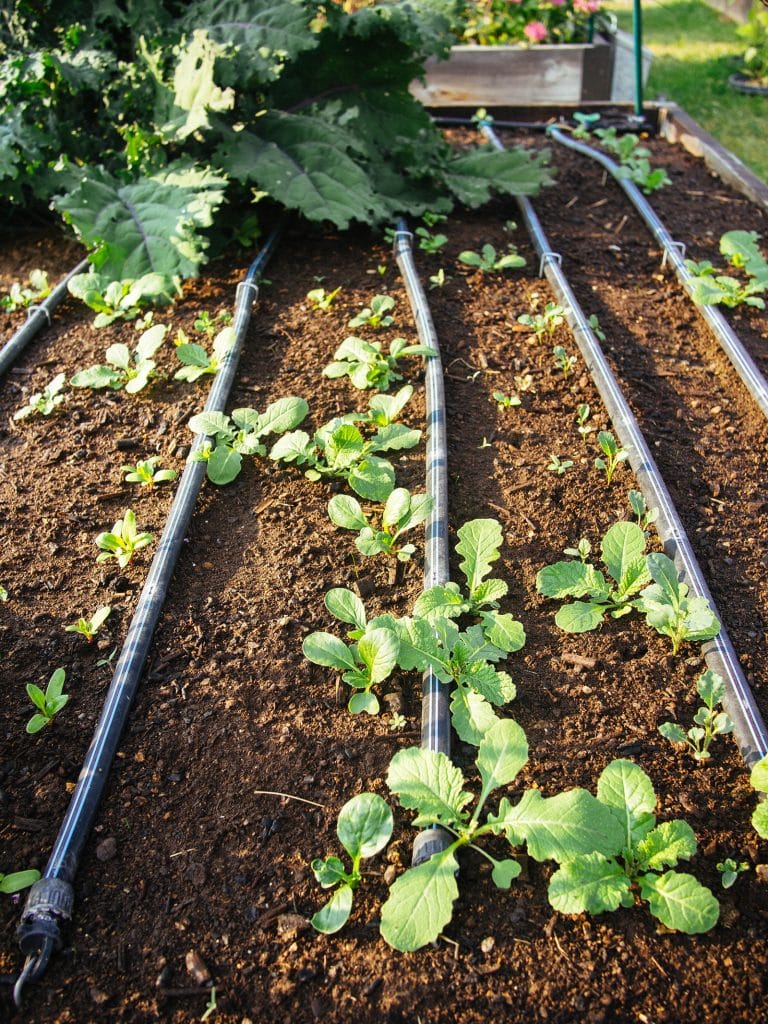
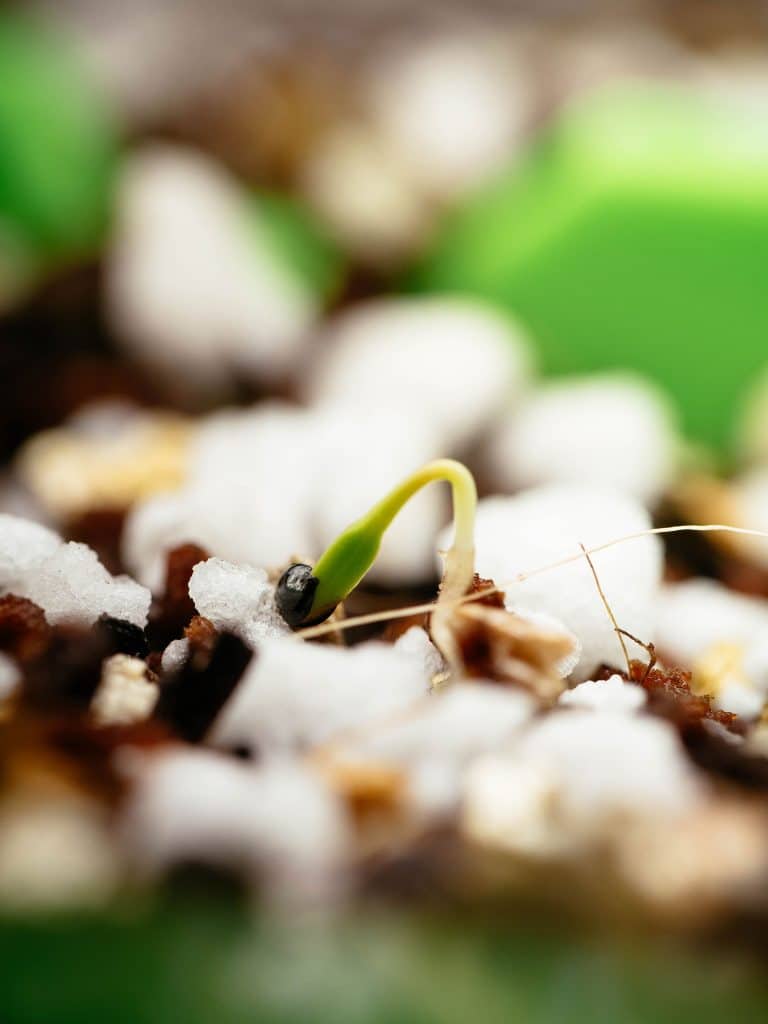









While I agree that buying lady beetles is a waste of money for the garden, they can be an important part of the organic pest control strategy. The purchase should be timed to arrive about the time that the greenouse warms enough so that white flies reproduce faster than their primary control, Encarsea formosa. (I might hame misspelled the genus.). Lady beetles eat soft bodied pests in both the larval and adult stags. Greenhouse vents must be screened or they will “fly away home.” Lacewing larvae should arrive about a month after the lady beetles, at least in central New England. Their larvae should be distributed hither and thither to minimize their cannablistic nature.